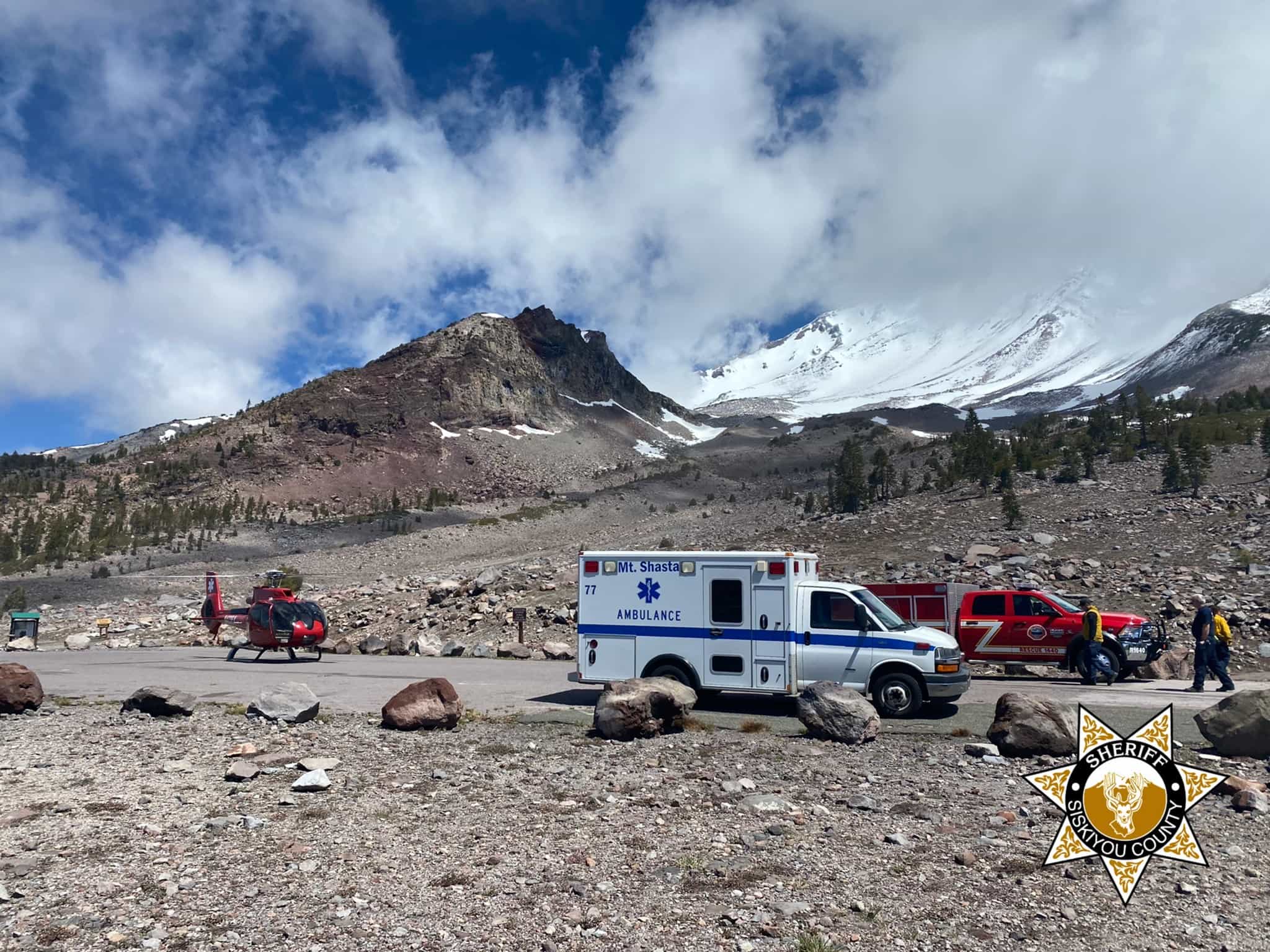
Five injured climbers in critical condition had to be airlifted from Mount Shasta, CA, yesterday, according to a Facebook post from Siskiyou County Sheriff’s Office. Sadly one of the climbers died as a result of their injuries.
Climbers had reported poor conditions after Sunday snowfall turned into ice overnight, according to MtShastaNews. ShastaAvalanche’s forecast for the weekend was, “this weekend, June 4-5 — The weather looks sporty again. Snow showers, rain, wind, and poor visibility are very likely on Saturday and Sunday. If you still plan on coming, be prepared people. Mount Shasta, despite being 15 minutes off the interstate, is not Disneyland. It’s a real mountain with real hazards. Climbing the mountain is not just “backpacking”. Over snow travel in steep terrain is an essential skill for a safe climb. And did we mention to check the weather?”
The first incident was reported at 8:39 am of a climber suffering severe injuries and in critical condition and one recovering from injuries that included a broken ankle, the sheriff’s office said. A third climber had died as a result of their injuries. In a second incident, a fourth climber was reported in critical condition at 12:31 pm. Both these incidents were in the area of Avalanche Gulch, a snowy glacier climb.
A third incident was reported at 4 pm. A helicopter crew was trying to locate a female climber who was injured on the mountain.
The Siskiyou County Sheriff’s Office coordinated rescue operations with Siskiyou County Search and Rescue (SAR), USFS Climbing Rangers, CHP – Air Operations H-14 Crew, Mount Shasta Ambulance, and the Mount Shasta City Fire Department. The identity of the deceased climber is being withheld pending notifying the victim’s family.
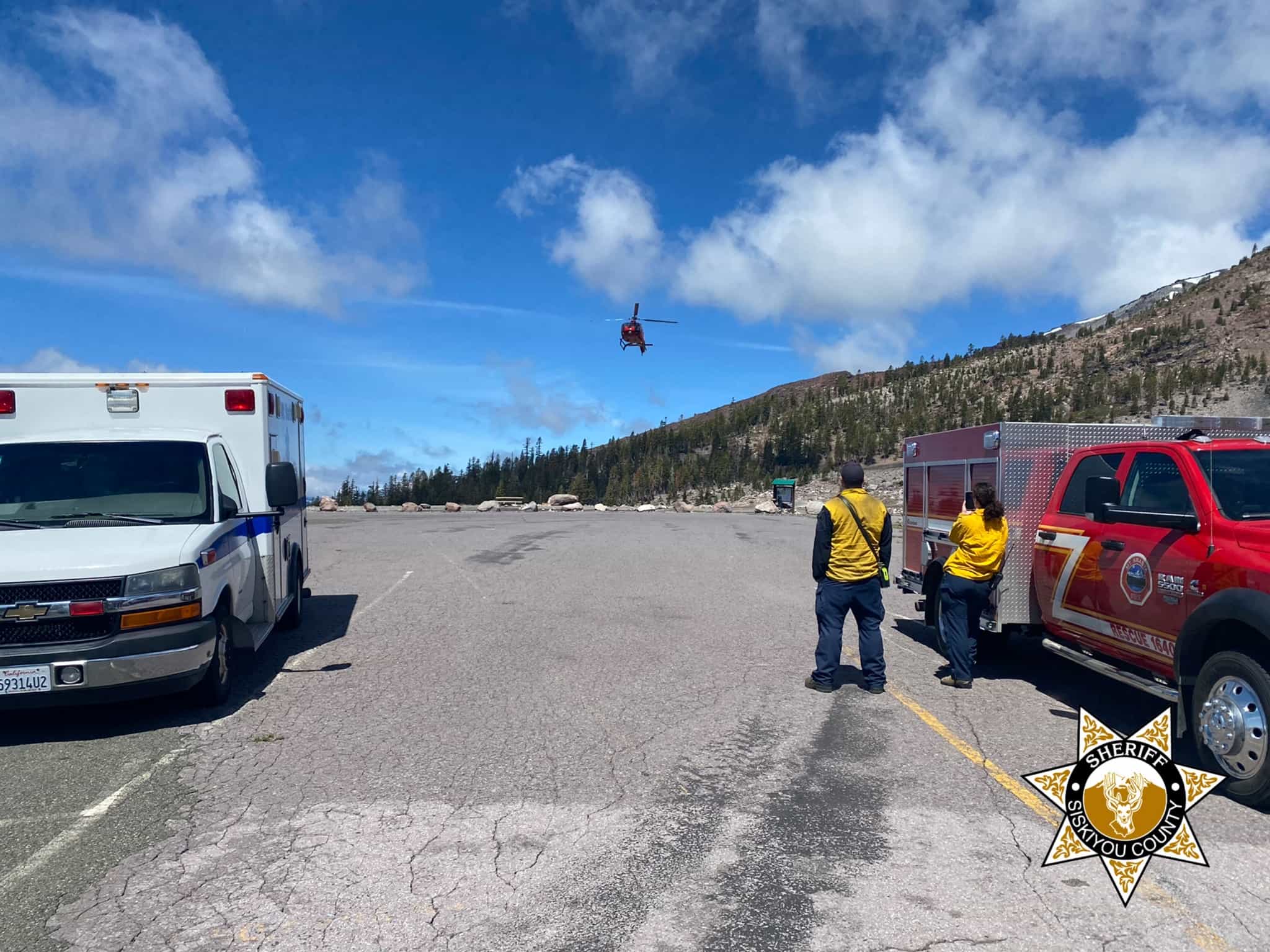
A SAFETY MESSAGE TO CLIMBERS: An ascent of Avalanche Gulch to the summit of Mount Shasta is not a “hike.” This is a mountaineering climb with steep snow, ice, and fall potential, high altitude, rock and ice fall hazard, and potentially winter-like weather. If you do not have prior mountaineering experience, please consider taking a mountaineering course, hiring a guide, and gaining experience on smaller mountains before attempting Mount Shasta. Rescue is not always possible and takes time to organize. Adopt a wilderness ethic of self-sufficiency while in the mountains. Know your abilities. Bring emergency gear and know how to use it. Make a turnaround time and stick to it. Ensure you have enough energy, food, and water left to safely descend the upper mountain. Descents are where most accidents happen. Please read all of the information on the climbing advisory below about climbing Mount Shasta and the risks involved.
A SAFETY MESSAGE TO SKI MOUNTAINEERS: Ski conditions on the upper mountain are variable and for experts only. If attempting to ski above 10,000′ on Mount Shasta you must be an expert level skier in all conditions. You must know how to assess snow conditions, avalanche hazard, terrain steepness, consequences of a fall, and most importantly, there are places that you must not fall. There are specific slopes where losing a ski or falling can result in injury or death, especially if snow conditions are firm and icy. This time of year, the snow does not always soften enough for a safe descent, especially if it’s cloudy or windy. Be prepared to walk down with your skis if conditions aren’t right. Most skiers ascend to the right of the Heart and then descend to the left of the Heart. This means they are “onsighting” the ski descent. That is, they don’t have first-hand knowledge of the snow conditions and steepness of the descent because they didn’t climb up the slope they’re choosing to descending. This necessitates careful evaluation of the weather, steepness, consequences, snow conditions, and an honest evaluation of one’s own abilities from the top down before committing to the ski descent. If you lose a ski or slip on the ski descent, what is your plan? Is your ice axe handy without taking off your backpack? Do you know how to securely transition from skis to crampons on a steep slope? Do you know how to downclimb a steep slope? These are the basic considerations you need to make before attempting to ski off of the upper reaches of Mount Shasta. The Trinity Chutes or “Left of Heart” in upper Avalanche Gulch is not the place to learn these skills. You need to have a solid skill set and experience level before attempting to ski Mount Shasta.
According to Wikipedia, Mount Shasta is a potentially active volcano at the southern end of the Cascade Range in Siskiyou County, California. At an elevation of 14,179 feet (4321.8 meters), it is the second-highest peak in the Cascades and the fifth-highest in the state. Shasta has an estimated volume of 85 cubic miles (350 cubic kilometers), which makes it the most voluminous stratovolcano in the Cascade Volcanic Arc. The mountain and surrounding area are part of the Shasta–Trinity National Forest.
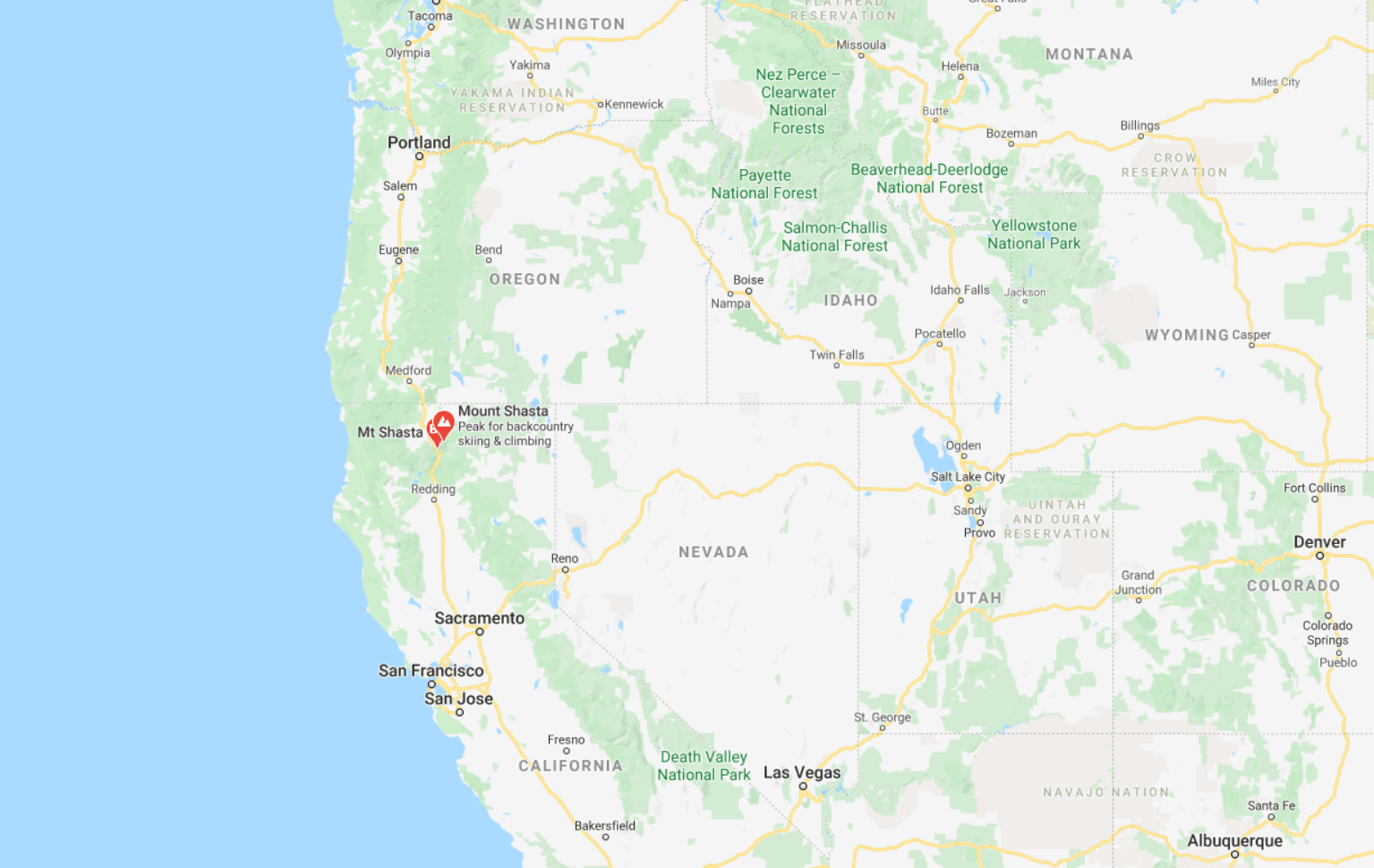

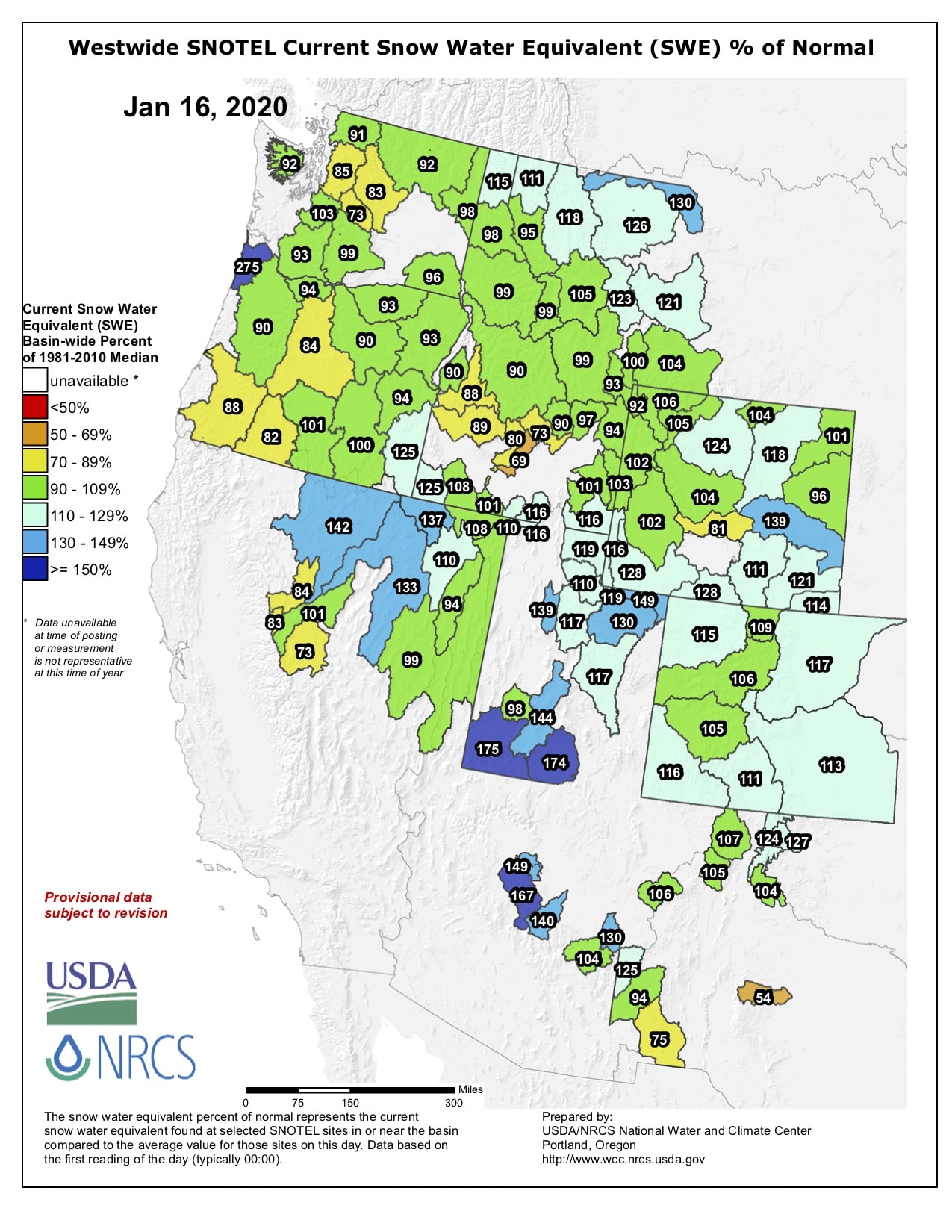
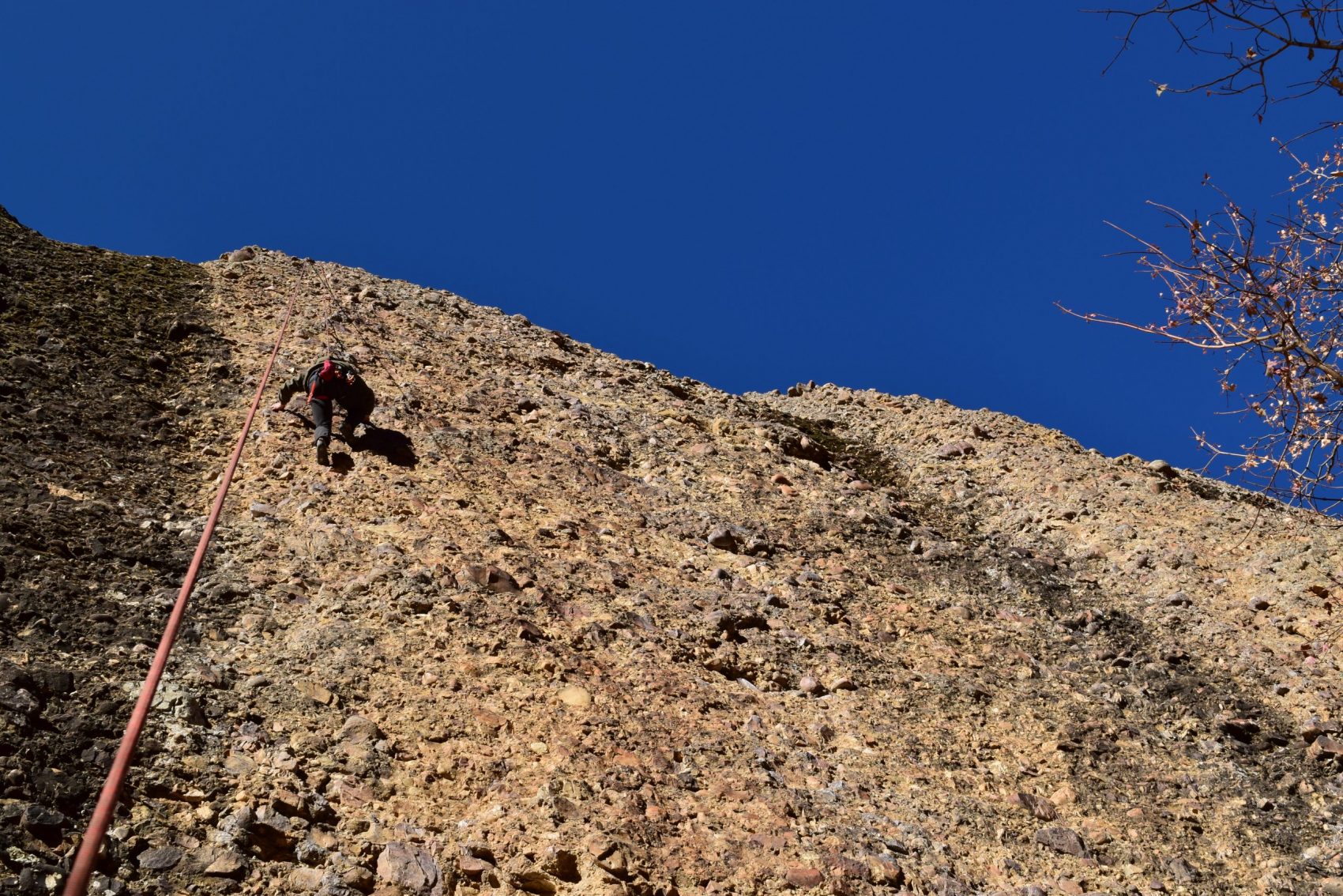
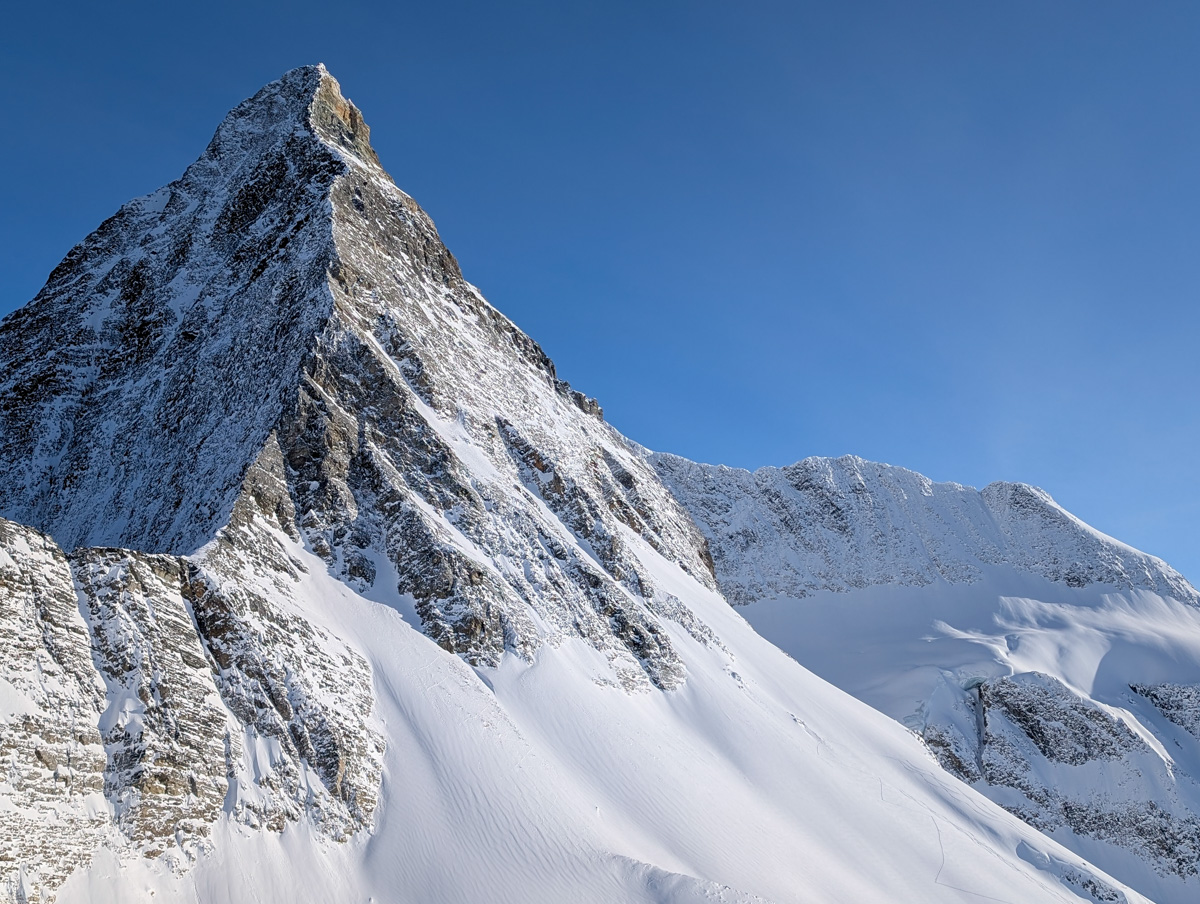
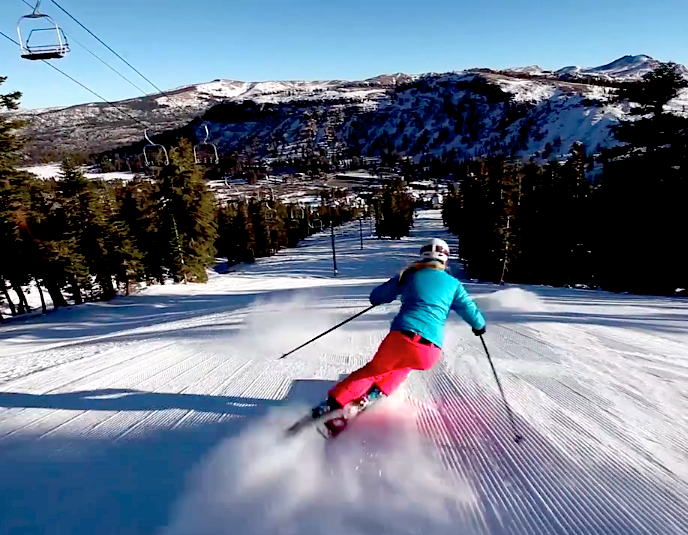
Glad to see the gatekeeprs of the mountains are out here today. 0% chance you were born where you live now, and want to pull up the ladder behind you.
This could have been prevented. Gapers come a dime a dozen, get skills and experience before attempting a 14er and don’t climb during unsettled weather. Duh!
The interweb kept telling big city and suburban Americans, ‘go to the mountains, it’s the groovy new thing.’ And so they went, and now this is what we got.